Radar and microwave pioneer commemorated with blue plaque
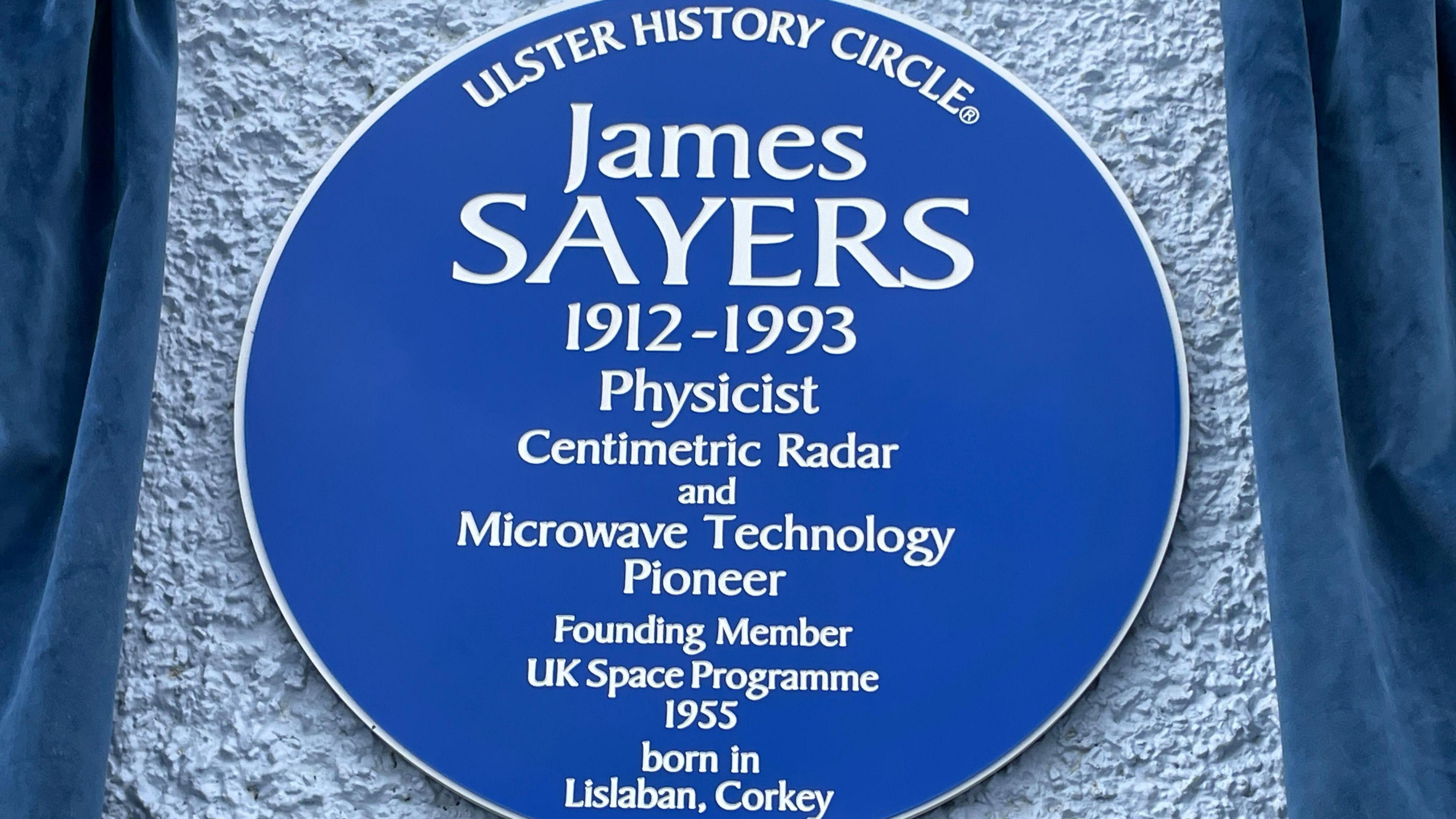
James Sayers played a key role in developing microwave technology and was recruited by the US to develop the atomic bomb
- Published
His name may not be on the tip of your tongue, but his technology helps most of us on a daily basis.
A scientist from County Antrim, who played a key role in developing microwave technology and was recruited by the United States to develop the atomic bomb, has been commemorated with an Ulster History Circle Blue Plaque in his home village.
James Sayers, who was born in Corkey near Ballymena in 1912, worked on the development of centimetric radar, which is now used in modern microwave ovens.
The plaque was unveiled on Wednesday at the former National School next to Ballyweaney Presbyterian Church, near Cloughmills.
Reverend Robert Hanna, 92, who grew up less than a mile from the Sayers family, nominated him for the plaque.
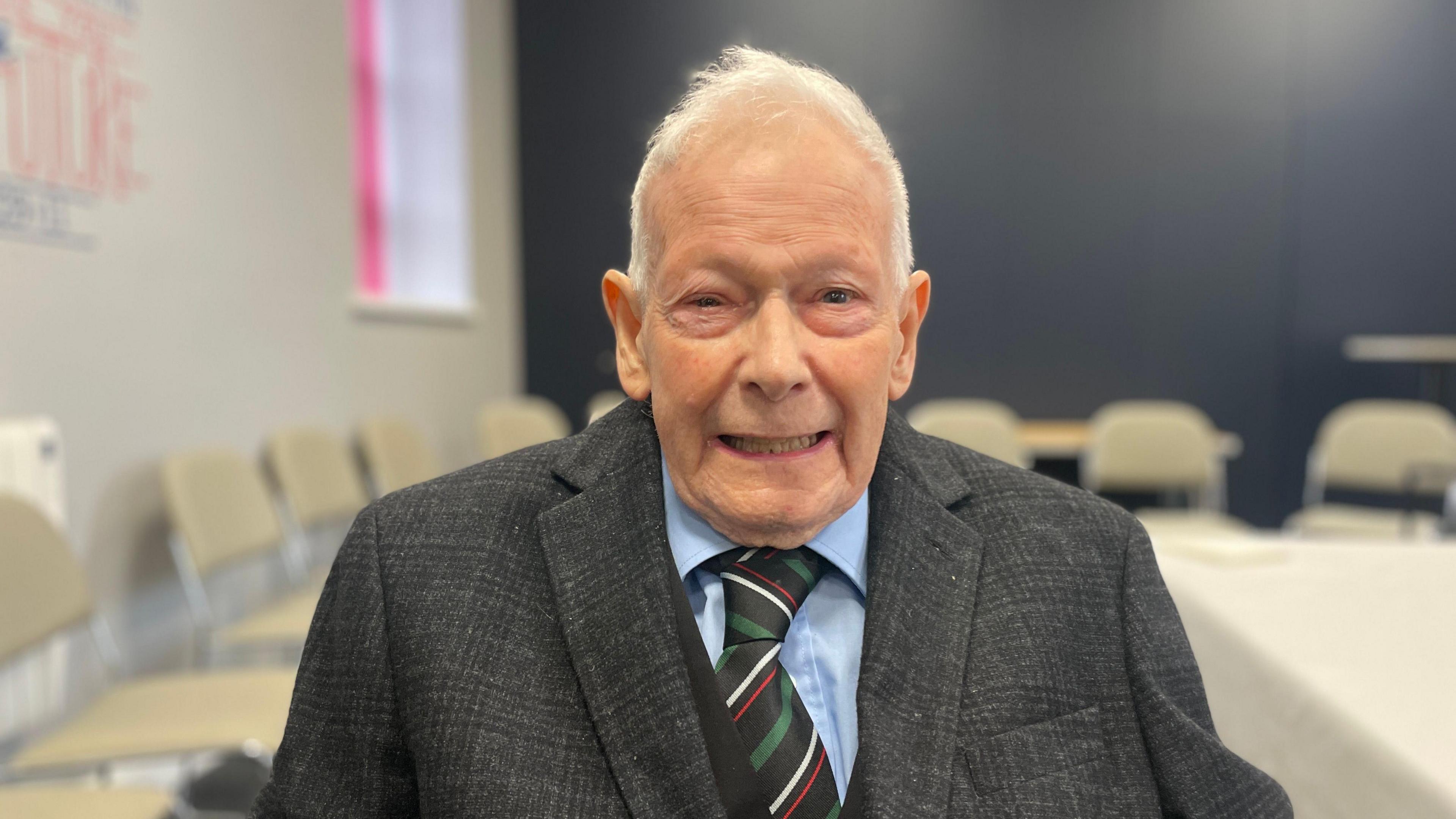
Reverend Robert Hanna remembered James Sayers' family and said they were "a great bunch"
“He was 30 years older than I was, but I was always impressed by the fact he had these interests and won quite a lot of prizes," he said.
"I think that this (the commemorative plaque) means a whole lot to this community. I remember their family, they were a great bunch, you couldn’t have beaten them.”
The Sayers family ran the local post office, with James the eldest of two sons of James Sr and Rachel.
Ballymena Academy, Queen’s University Belfast, Cambridge University

James Sayers developed a lifelong interest in science while studying physics at Queen’s University, Belfast
After attending Ballymena Academy, James studied physics at Queen’s University Belfast.
There he developed a lifelong interest in science, and after obtaining a MSc in 1935, he continued postgraduate research at St John’s College in Cambridge.
By the summer of 1938, with war on the horizon, Sayers was employed by the University of Birmingham, where a research programme to develop radar had been quickly established.
His input into its development was a decisive factor in securing the Allied victory in the crucial battle of the Atlantic.
Later, this technology would be used to develop the domestic microwave oven.
Rural background
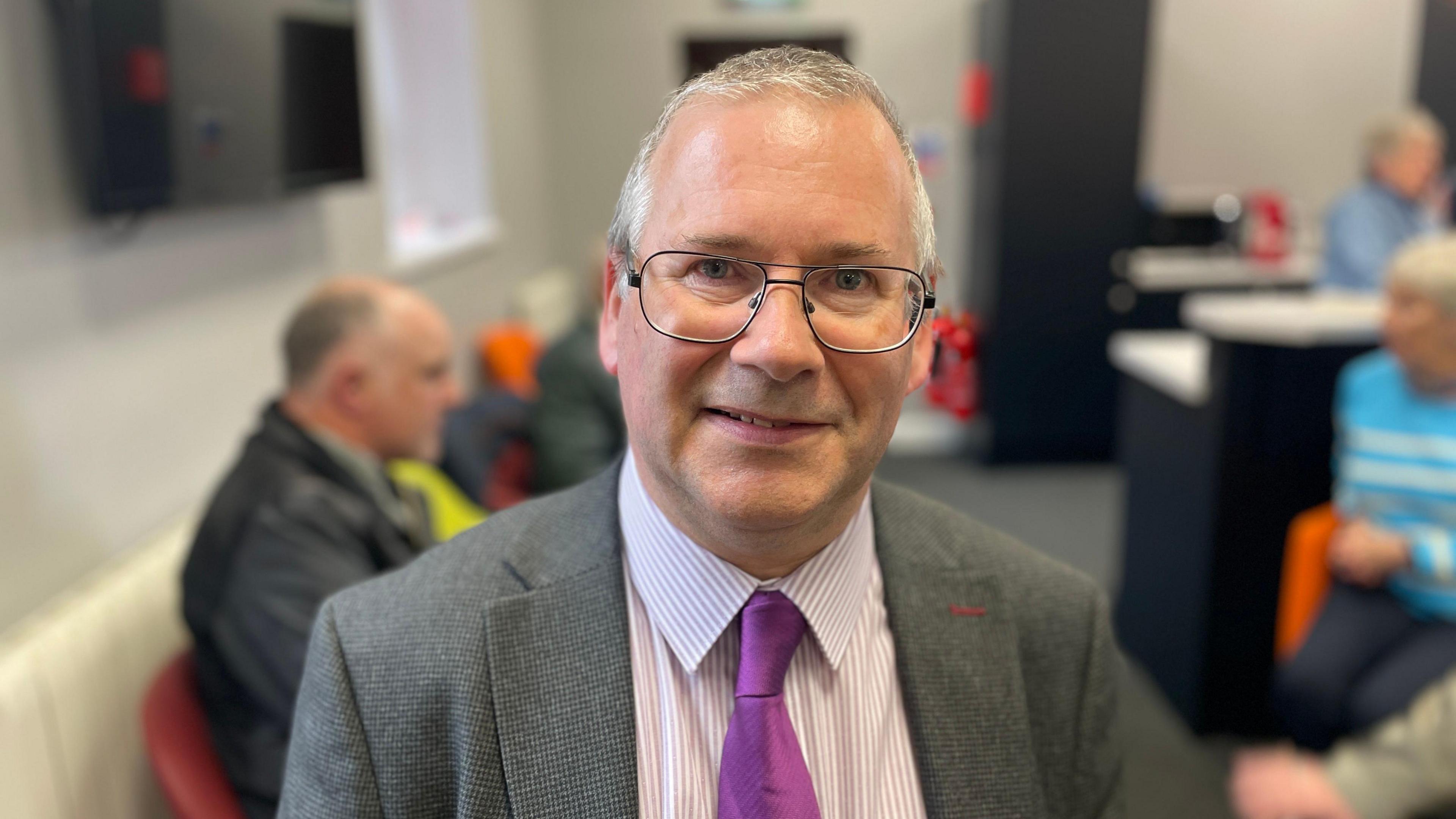
Dr David Hume said the fact that James Sayers "came from such a rural community like this is really quite amazing”
Dr David Hume from the Ulster History Circle was instrumental in organising the plaque for Sayers.
“He was a very influential person and was responsible for a major technological breakthrough in radar as there were a lot of efforts from the late 30s to develop it," he said.
"Just an amazing scientific figure, and to think that he came from such a rural community like this is really quite amazing.”

James Sayers (centre) with Professor John Randall (left) and Professor Henry Albert Howard Boot, in Somerset House for a hearing of the Royal Commission on awards to inventors in 1959
Work on the Manhattan Project
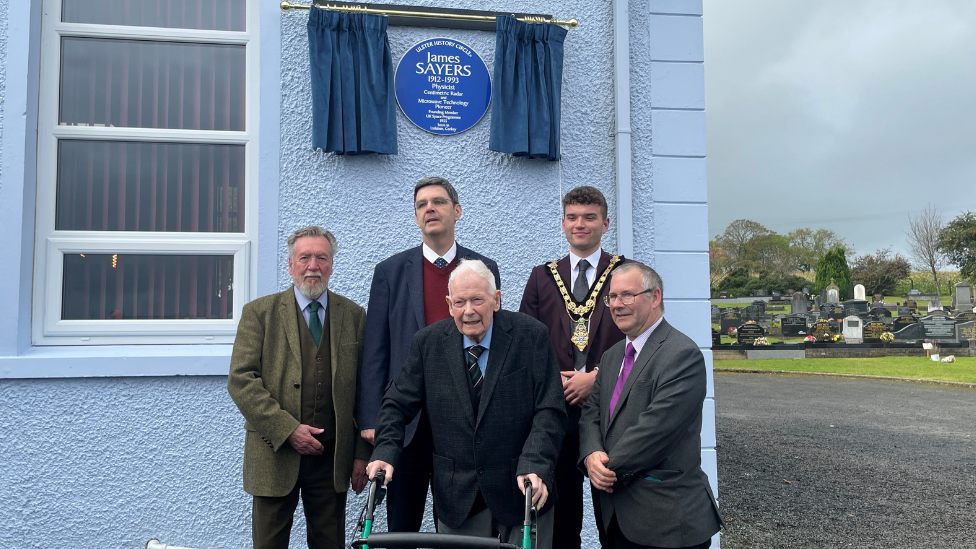
(L-R) Chris Spurr from Ulster History Circle, Rev Kenneth Henderson, Rev Robert Hanna, Mayor Ciarán McQuillan from Causeway Coast and Glens Borough Council and Dr David Hume from Ulster History Circle
In 1943 Sayers was seconded with other British scientists to work in the United States on the top-secret Manhattan Project, developing the atomic bomb with the likes of J. Robert Oppenheimer.
After the war, he returned to Birmingham to become professor of electron physics at the university there.
Several years later, in 1955, Sayers became one of the founding members of a small sub-committee established by the Royal Society, which mapped out the future of British upper atmosphere research.
This was to be the beginning of the UK's space programme.
He was also part of a small group which in 1959 travelled to America to negotiate with the newly established NASA, as it was decided that the UK should partner the US in constructing satellites.
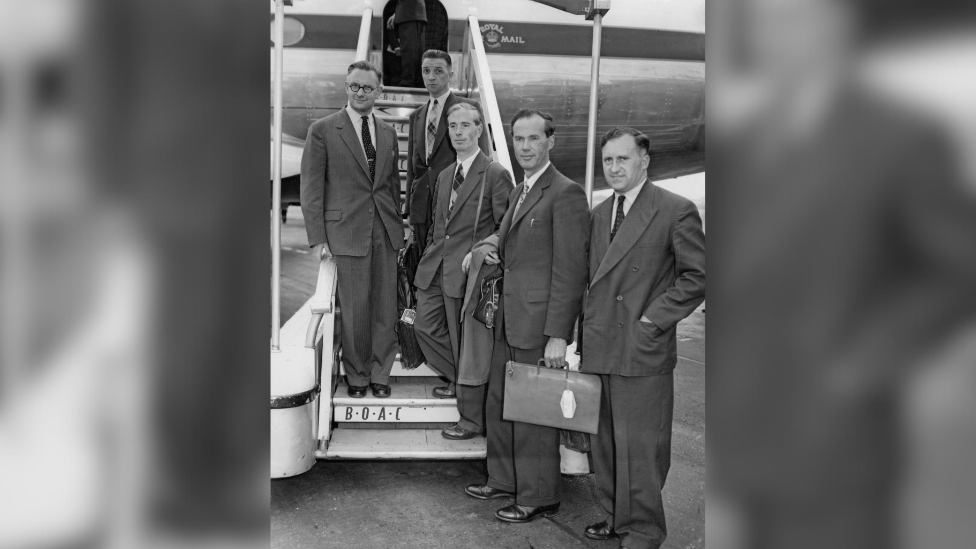
Sayers (second from right) leaving London Airport with other scientists for the United States to discuss the development of the British space programme in June 1959
James went on to buy back this family farm in Corkey, which had been sold by his brother, and he retired there from 1972. He died in 1993 aged 80.
Rev Hanna said it was only recently that he learned that Sayers had moved home.
“I was amazed to find out that he came here to retire to his old home in Corkey. He was prepared to buy it back and in the last 20 years of his life he was up at that home. I feel sad that I hadn’t known of that to call to see him.”
The Ulster History Circle, which was behind the commemoration, place blue plaques across Ulster, to celebrate the achievements of those men and women who have contributed significantly to history, locally, nationally and internationally.
James Sayer is now the 278th figure to be commemorated by them.
Related topics
- Published31 March 2024
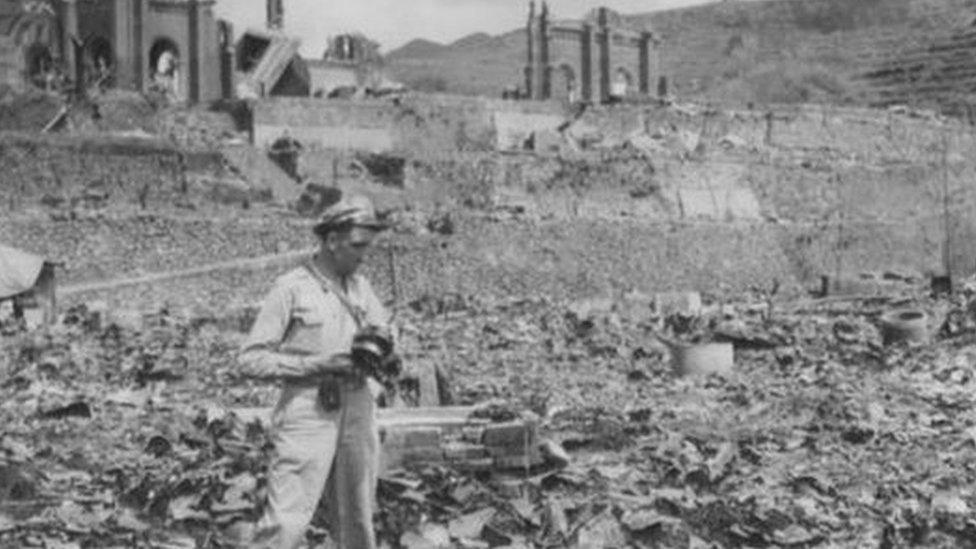
- Published23 May 2018
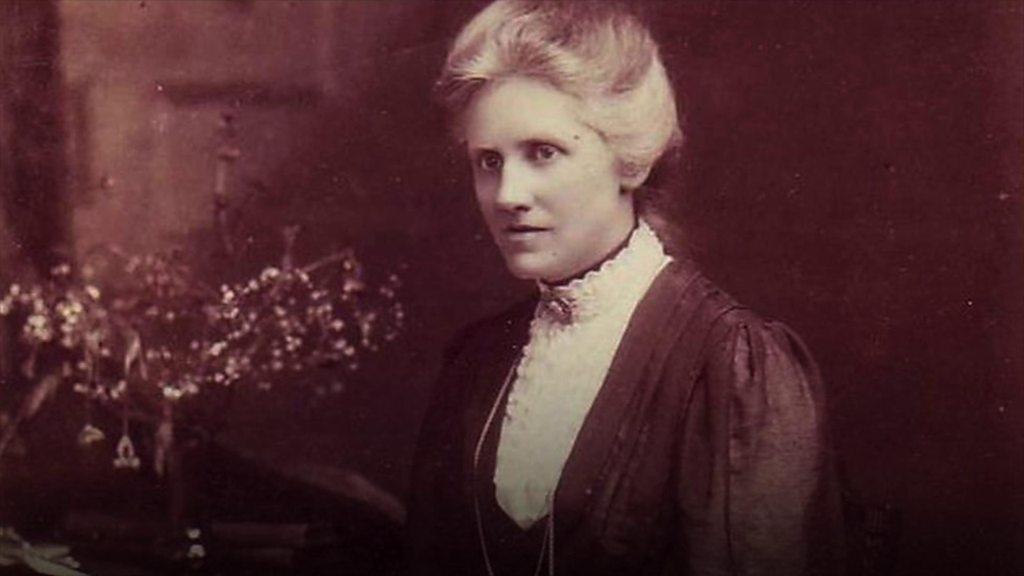
- Published9 November 2019
